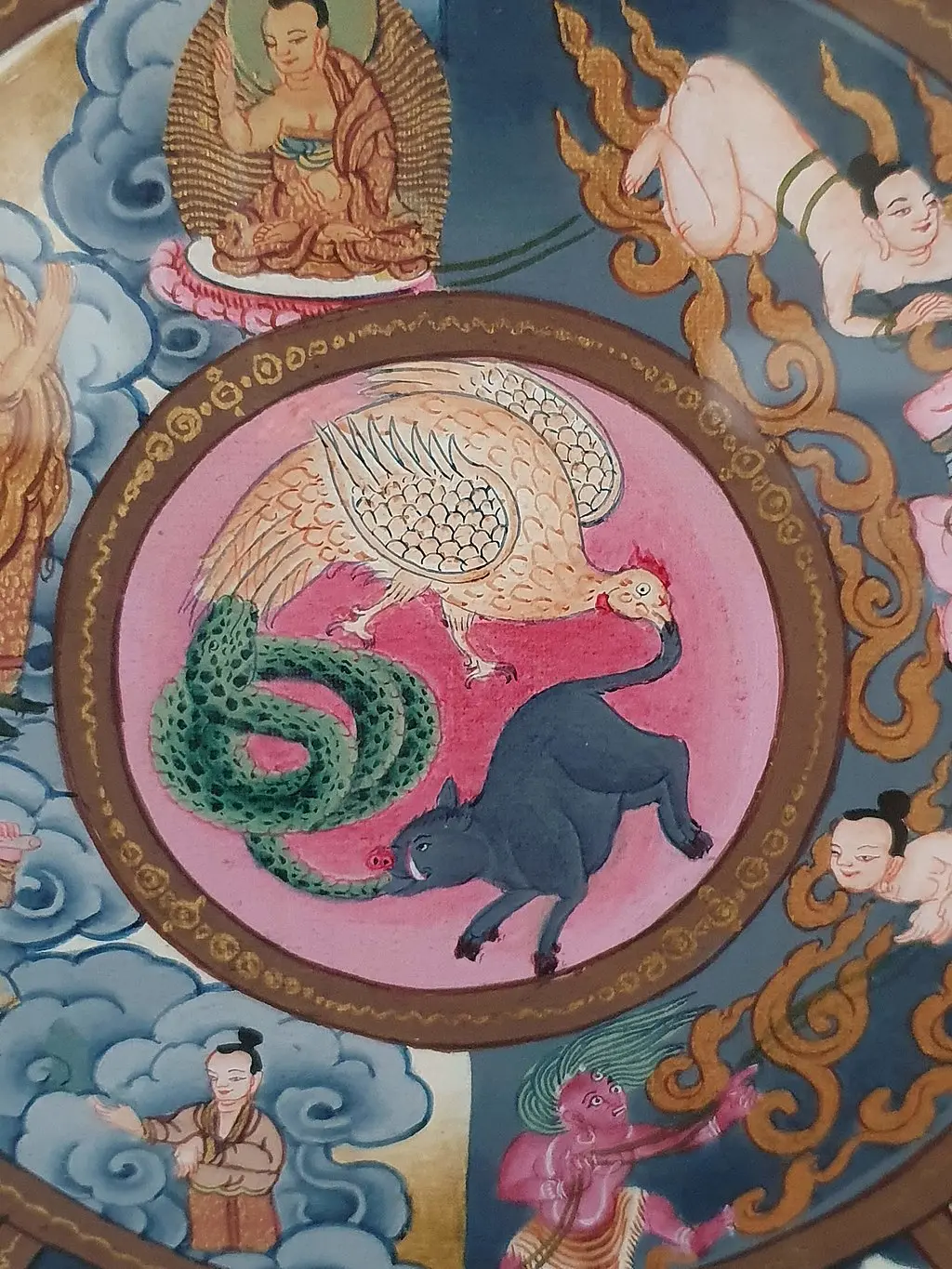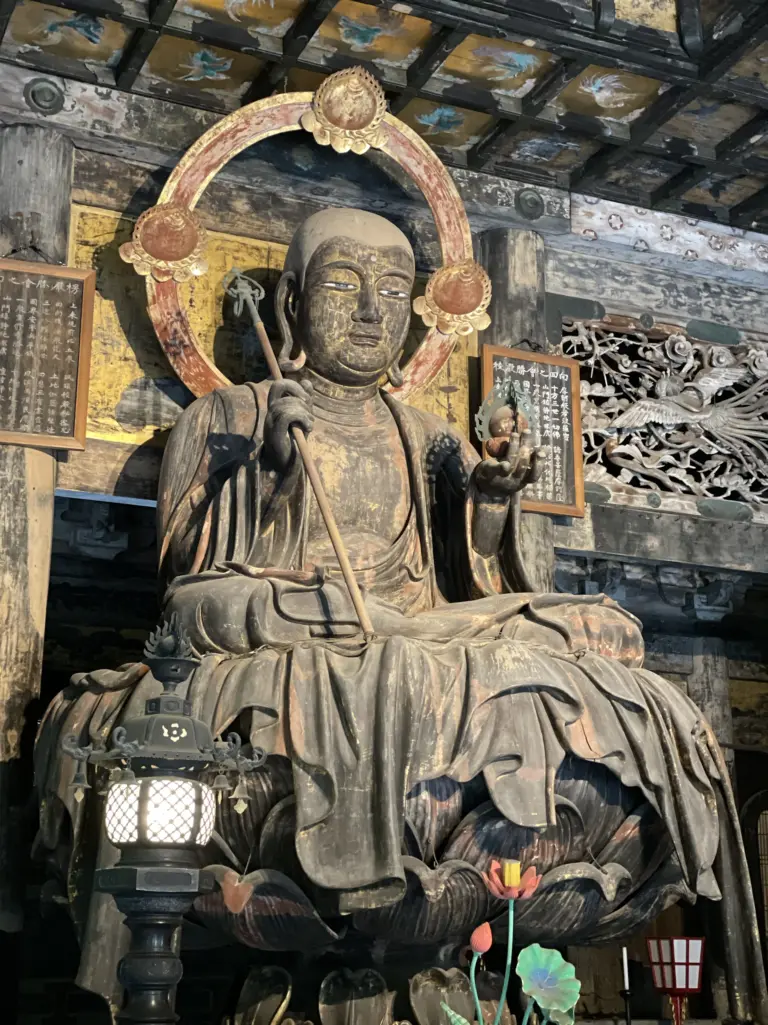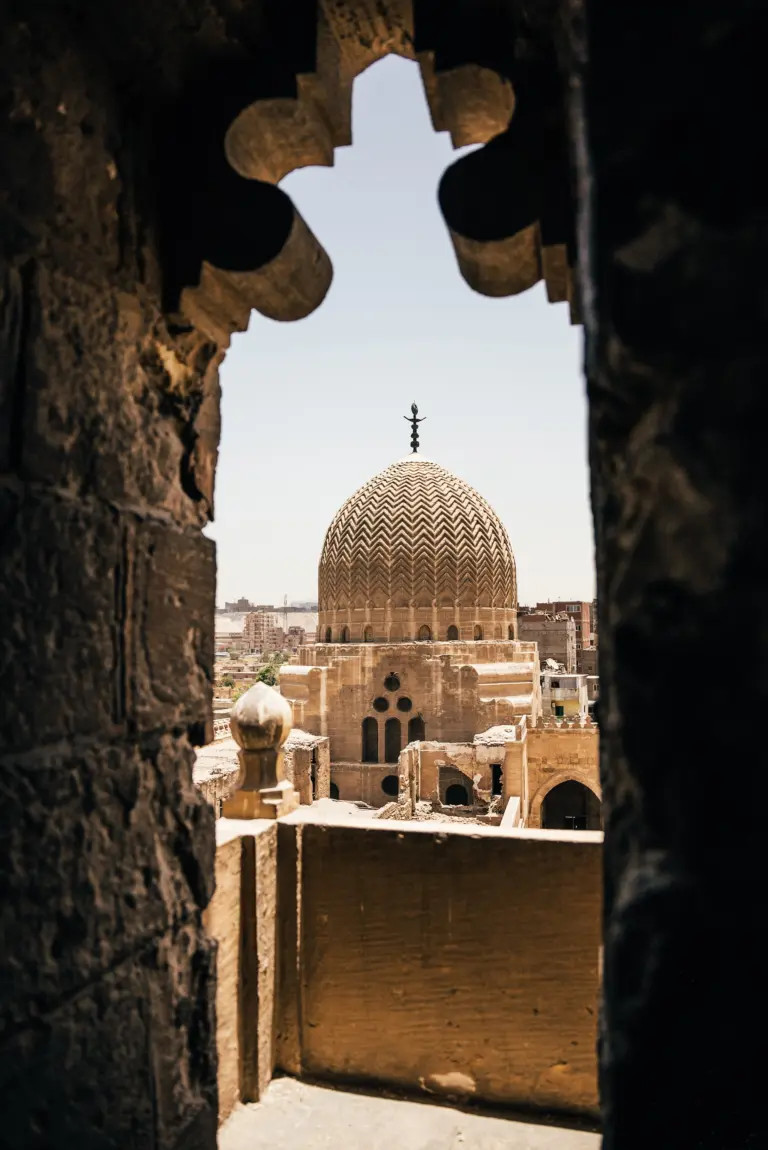Welcome to the Sundarbans, the world’s largest mangrove forest, a marvel that stretches across both Bangladesh and India. It cradles an ecosystem so unique that it’s been recognized as a UNESCO World Heritage Site!
For those not in the know, the Sundarbans is a sanctuary for hundreds of species, including the majestic Royal Bengal Tiger, and acts as a natural barrier protecting inland communities from cyclones and tidal surges. It’s a place where the line between land and water blurs, creating a world unlike any other.
It’s also home to Bonbibi, the forest goddess revered by the people who live in and around this vast mangrove. Bonbibi isn’t bound by the confines of a single religion; as she is worshipped by both Hindus and Muslims alike. Something that was so mind-blowing for me when I first encountered her while I was traveling in Bangladesh.
I was able to learn a lot about Bonbibi from the village chief at one of the settlements we visited by the Sundarbans, at that time they were in the process of creating a new shrine and creating new idols, which you’ll get to see through the pictures on this article! Together, let’s uncover the legend of Bonbibi, exploring how this revered deity encapsulates the spirit of one of the most extraordinary places on Earth.
Table of Contents
Toggle
The Origin of Bonbibi
Tracing the origins of Bonbibi’s worship is like walking through a mist-shrouded forest; it’s challenging to discern the beginnings of her veneration. However, it is clear that as settlers began to make their homes in the challenging terrain of the Sundarbans, confronting its perils and beauty, the figure of Bonbibi emerged as a protective force, embodying the forest’s generosity and its dangers.
The tales of Banbibi are chronicled in texts such as “Banbibir Keramati” (the magical deeds of Banbibi) and “Banbibir Jahuranama” (praise to Banbibi). Renowned among the first poets to pen these stories are Bayanuddin and Munshi Mohammad Khater.
Bonbibi is not merely a deity to be worshipped; she is a symbol of the Sundarbans itself—through Bonbibi, the forest speaks, teaching lessons of coexistence, respect, and the eternal cycle of give and take that defines life in this majestic mangrove.
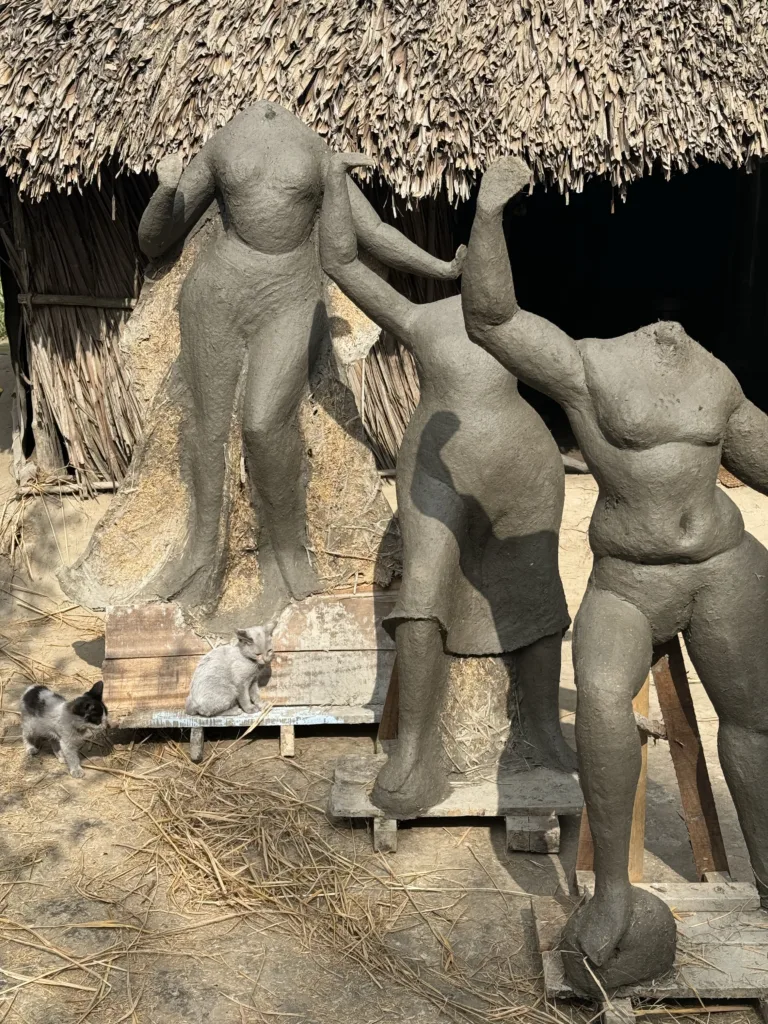
Iconography of Bonbibi
To her Hindu followers, Bonbibi is known as Bandurga, Bandevi, or simply Bonbibi, each name reflecting a facet of her identity as the forest’s guardian deity.
In these depictions, Bonbibi’s divine stature is emphasized through traditional symbols of power and protection. She is often portrayed wearing a crown and a garland, symbols of her sovereignty over the forest and its creatures. In her hands, she might hold a club and trishul (trident), tools that signify her strength and her role as a protector, ready to defend the innocent and the vulnerable. Perhaps the most striking aspect of her Hindu iconography is her vahana (vehicle), a tiger, underscoring her dominion over the forest and the creatures within it, including the fearsome Royal Bengal Tiger itself.
In contrast, the iconography embraced by her Muslim followers highlights Bonbibi’s attributes as a pirani (a revered woman of the Sufi tradition). These images often depict her with braided hair adorned with a cap, a tikli (a traditional forehead ornament). Unlike the sari seen in Hindu representations, Bonbibi is shown wearing a ghagra and pyjama, along with a pair of shoes, attire that aligns with traditional Muslim dress codes yet is adapted to the context of the Sundarbans.
Both Hindu and Muslim representations of Bonbibi share a common motif—a boy seated on her lap, universally recognized as Dukhe. We’ll get to know Dukhe later.
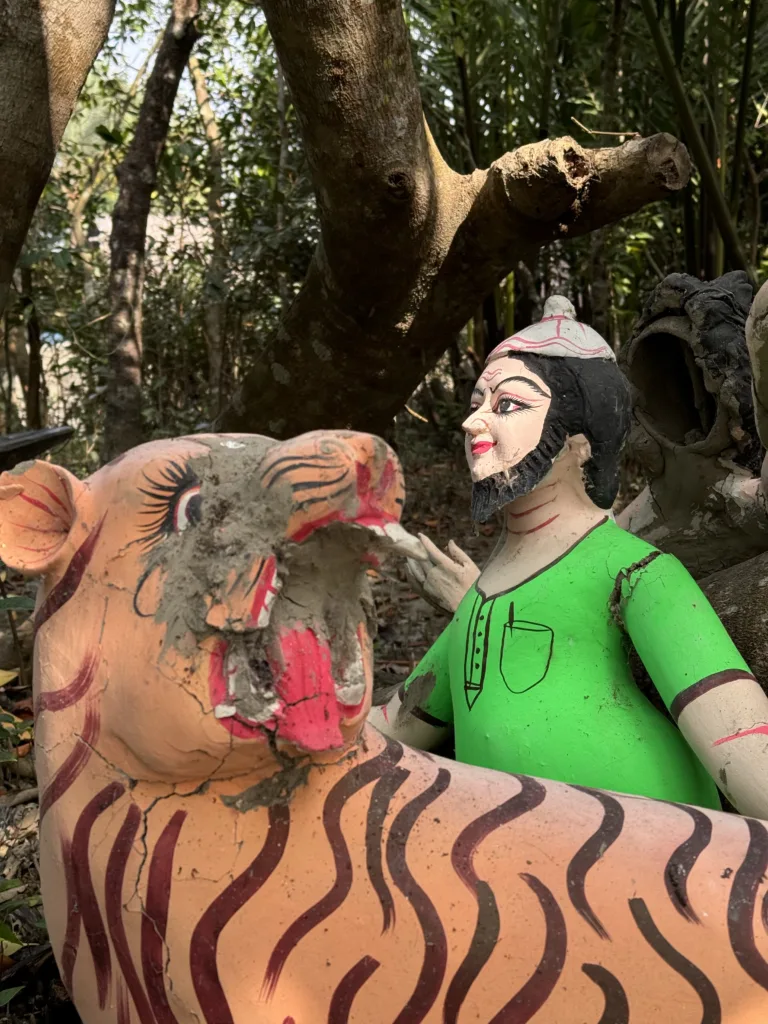
Bonbibi: A Symbol of Syncretism
Bonbibi’s veneration by both Hindu and Muslim communities is a vivid illustration of syncretism, where diverse religious practices and beliefs intertwine harmoniously.
For the Hindu inhabitants of the Sundarbans, Bonbibi is a divine figure, a goddess who protects and guides them through the dense mangroves. Her tales are ingrained in the Hindu traditions of the region, enriched with festivals that celebrate her benevolence and guardianship. In these practices, Bonbibi is revered in shrines, her stories told and retold as part of the community’s spiritual heritage.
The Muslim communities of the Sundarbans (despite the monotheistic foundations of Islam that traditionally abstain from idol worship) have found a place for Bonbibi in their cultural landscape. This inclusion speaks volumes about the adaptive nature of religious practices, highlighting a form of reverence that aligns with the broader Islamic principles of protection and respect for nature. For these Muslims, Bonbibi transcends the role of a deity; she embodies the qualities of a saintly figure, a protector who represents Allah’s guardianship over the forest and its inhabitants.
This syncretic worship is not characterized by the rituals alone but by the underlying respect and acknowledgment of a shared need for divine protection in the treacherous beauty of the Sundarbans. Bonbibi’s veneration bridges religious divides, creating a space where Hindu and Muslim communities can unite in their common reverence for her. This unity is particularly evident during festivals and gatherings in her honor, where people of both faiths participate, showcasing a remarkable instance of communal harmony.
The Legend of Bonbibi
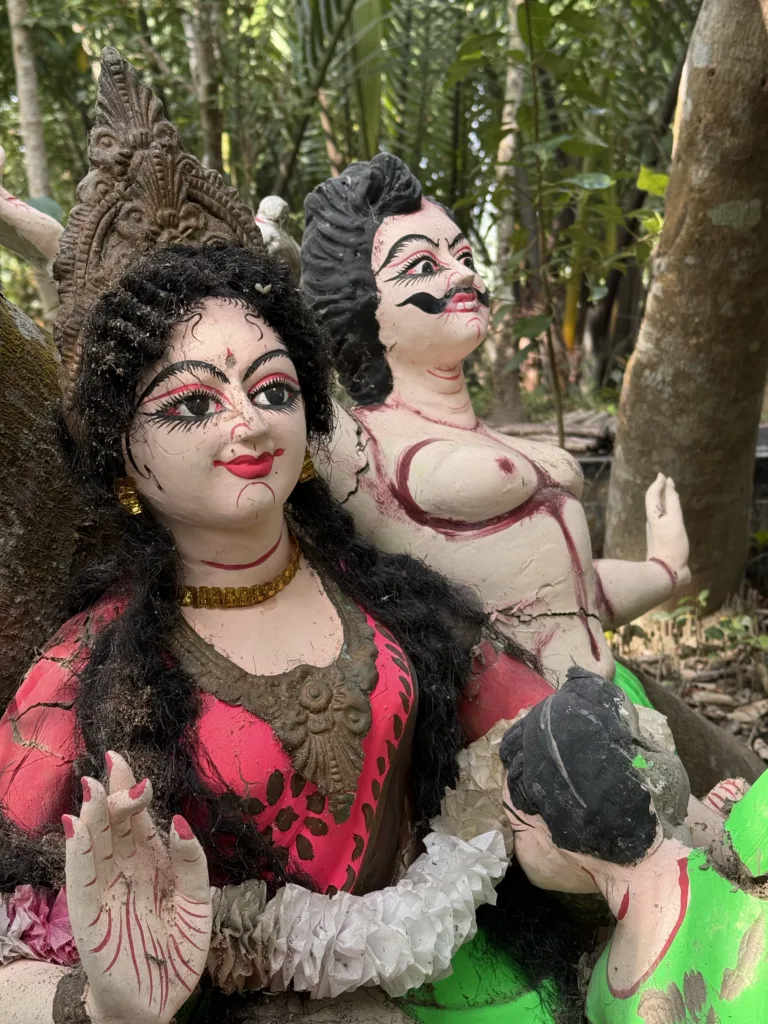
The Battle with Dakkhin Rai
The saga of Bonbibi begins with her divine lineage. She is believed to be the offspring of Berahim, a devout fakir (ascetic) from the sacred city of Mecca.
The narrative unfolds with Ibrahim’s dilemma: his first wife, Phulbibi, was unable to bear children, leading him to marry Golalbibi under the condition that her future wish be granted. This marital union was destined for greatness, as at the same time, a divine plan was set in motion to send Bonbibi and her brother, Shah Jangali, from heaven to earth for a noble mission.
They were to be born to Golalbibi, marking their entry into the world with a celestial sign. When Golalbibi became pregnant, Ibrahim, in a bid to fulfill his promise to Phulbibi, left Golalbibi in the forest. There, amidst nature’s embrace, Bonbibi and Shah Jangali were born. Allah’s intervention was immediate and caring, sending four heavenly maids to look after the newborns. Golalbibi, overwhelmed by her circumstances, left Bonbibi in the forest, taking only Shah Jangali with her.
In the wilderness, Bonbibi was nurtured by a doe. After seven years, realizing his grave mistake, Berahim reunited his family, bringing Golalbibi and her children back to Mecca.
The turning point in Bonbibi’s story occurs when, during a prayer session at the prophet’s mosque, she and Shah Jangali receive two magical hats. Empowered by these hats, they journey to the country of eighteen tides in Hindustan, a place known today as the Sundarbans. This journey was facilitated by the angel Gibril (Gabriel). Upon their arrival, Shah Jangali’s call to prayer, the adhan, reverberates through the land, signaling the beginning of a new era. This sacred sound reaches Dakkhin Rai, the demon king who ruled the Sundarbans.
Curious and threatened by these new arrivals, Dakkhin Rai sends his emissary, Sanatan Rai, to learn about them. Upon hearing of Bonbibi and Shah Jangali, Dakkhin Rai resolves to expel them from his territory. However, it is his mother, Narayani, who first confronts Bonbibi, leading a formidable army of ghosts and goblins against her.
The ensuing battle, fierce and long, ends with Bonbibi emerging victorious. Yet, in a display of her inherent mercy and wisdom, she does not seek retribution. Instead, she returns half of the kingdom to Narayani, forging an unlikely alliance. This act of clemency transforms Narayani into a friend and ally.
This legendary battle and the diplomatic resolution that followed establish Bonbibi’s dominion over the Sundarbans, dividing the land between the human-inhabited areas under her protection and the deeper forests ruled by Dakkhin Rai.
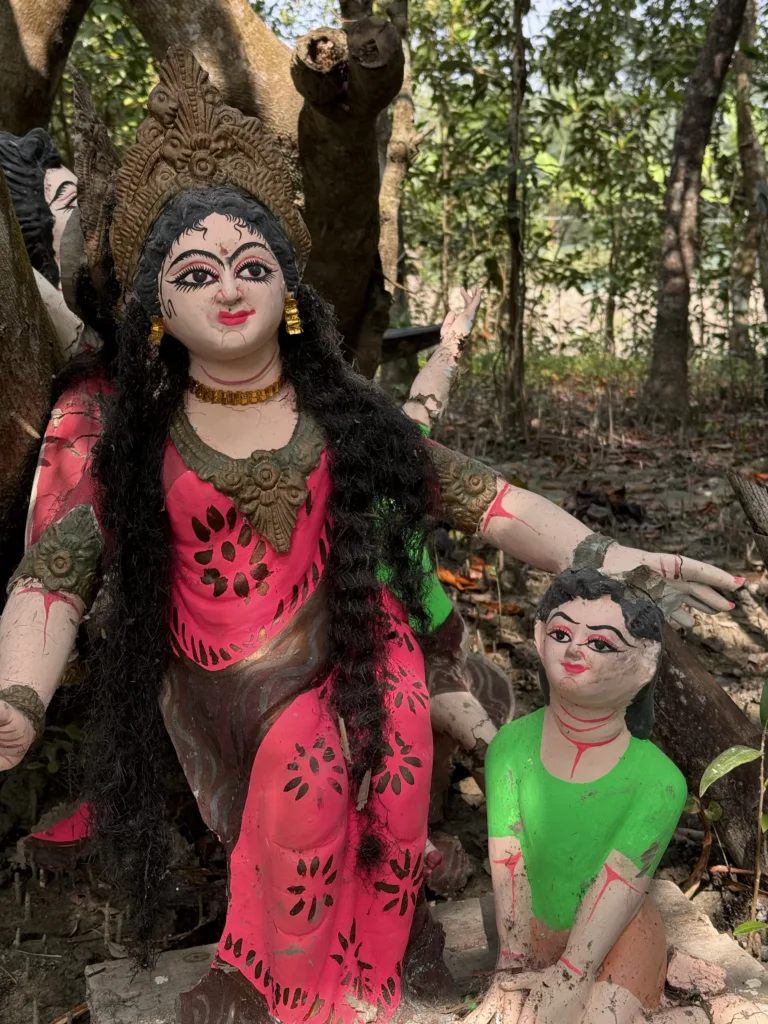
The Story of Dukhe
In the village of Barijhati, nestled within the Sundarbans, lived two brothers, Dhona and Mona, known for their expertise as Moule (honey collectors). Dhona was determined to embark on an ambitious expedition with seven boats into the mahal, the dense forest heart, despite Mona’s reservations. For this journey, Dhona enlisted a poor shepherd boy named Dukhe, advising him to seek Bonbibi’s protection in times of peril.
As they ventured into Kendokhali char, a domain under Dakkhin Rai’s reign, Dhona’s neglect to offer tributes to the tiger demon would lead them into misfortune. Unable to collect honey or wax for three days, Dhona was confronted by Dakkhin Rai in a dream, demanding a human sacrifice for the oversight. Driven by greed, Dhona consented to sacrifice Dukhe in a sinister trade for the forest’s riches. After amassing their bounty, Dhona callously abandoned Dukhe in the forest, returning to his village with the spoils.
Faced with imminent death at the hands (or paws) of Dakkhin Rai, disguised as a tiger, Dukhe’s desperate prayers to Bonbibi summoned her and her brother Shah Jangali to his aid. The ensuing confrontation saw Shah Jangali overpowering Dakkhin Rai, who then sought sanctuary with Bara Khan Ghazi. The pursuit led Banbibi and Shah Jangali to Ghazi’s threshold, where Ghazi, through diplomacy, convinced Banbibi to spare Dakkhin Rai. As a token of this accord, Ghazi rewarded Dukhe with seven carts laden with treasures, while Dakkhin Rai compensated him with ample wax and honey. To ensure Dukhe’s safe return to his village, Bonbibi commanded her pet crocodile, Seko, to transport him home.
Dukhe’s miraculous return, bearing not just the physical but also the spiritual wealth of his ordeal, ignited the worship of Bonbibi across the neighboring regions, spreading her tales of benevolence and protection. His ordeal turned triumph, elevated Dukhe’s status within his community, culminating in his marriage to Dhona’s daughter, Champa, and his ascension to the role of Chaudhury, or chief, of the village.


